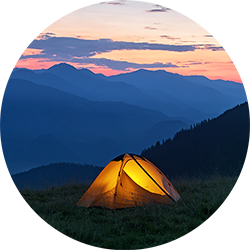Jaipur 2 Days Trip
City Palace, Jantar Mantar, Hawa Mahal, Albert Hall Museum, Amer Fort, Jaigarh, Fort, Nahargarh Fort, Rambagh Palace, Galta Ji, Chokhi Dhani, Bapu Bazar, Sisodia Rani Ka Bagh, Statue Circle, Gaitore, Panna Meena ka Kund, Birla Mandir, Raj Mandir and many more.A short getaway into the land of regality, sounds good right? Then the places to visit in Jaipur in 2 Days will offer just a perfect vacation for you. Explore Jaipur's gems in 2 days with our Jaipur travel package, discovering historical wonders, vibrant markets, and cultural treasures effortlessly. Something that you and your loved ones can plan over a weekend, Jaipur as a city is dotted with a variety of attractions worth seeing. Right from the expansive and minted palaces like the City Palace and Rambagh Palace, to the ones enveloping fascinating histories like - Amer Fort and Jaigarh Fort. Besides this, if you want to have an authentic rural Rajasthani experience ‘Chokhi Dhani’ is the one-stop destination offering traditional dining, camel and bullock-cart rides, old-school games, and cultural performances to set the visitors mood right.
If this is not your cup of tea, then during the 2 days trip in Jaipur you can explore the Old City markets like - Johari Bazaar (for jewelry), Bapu Bazaar (for clothes and handicrafts), MI Road (for blue pottery), etc. Or take a tour of the Albert Hall Museum in the day and end it with a light show in the evening. For the trotters with a modern taste, Jaipur has a blooming urbane culture that can be seen at the some of the popular spots like - the iconic teahouse ‘Tapri’, shopping at the biggest mall in the city ‘World Trade Park’, and watching a sunset from the heights of Nahargarh Fort.







